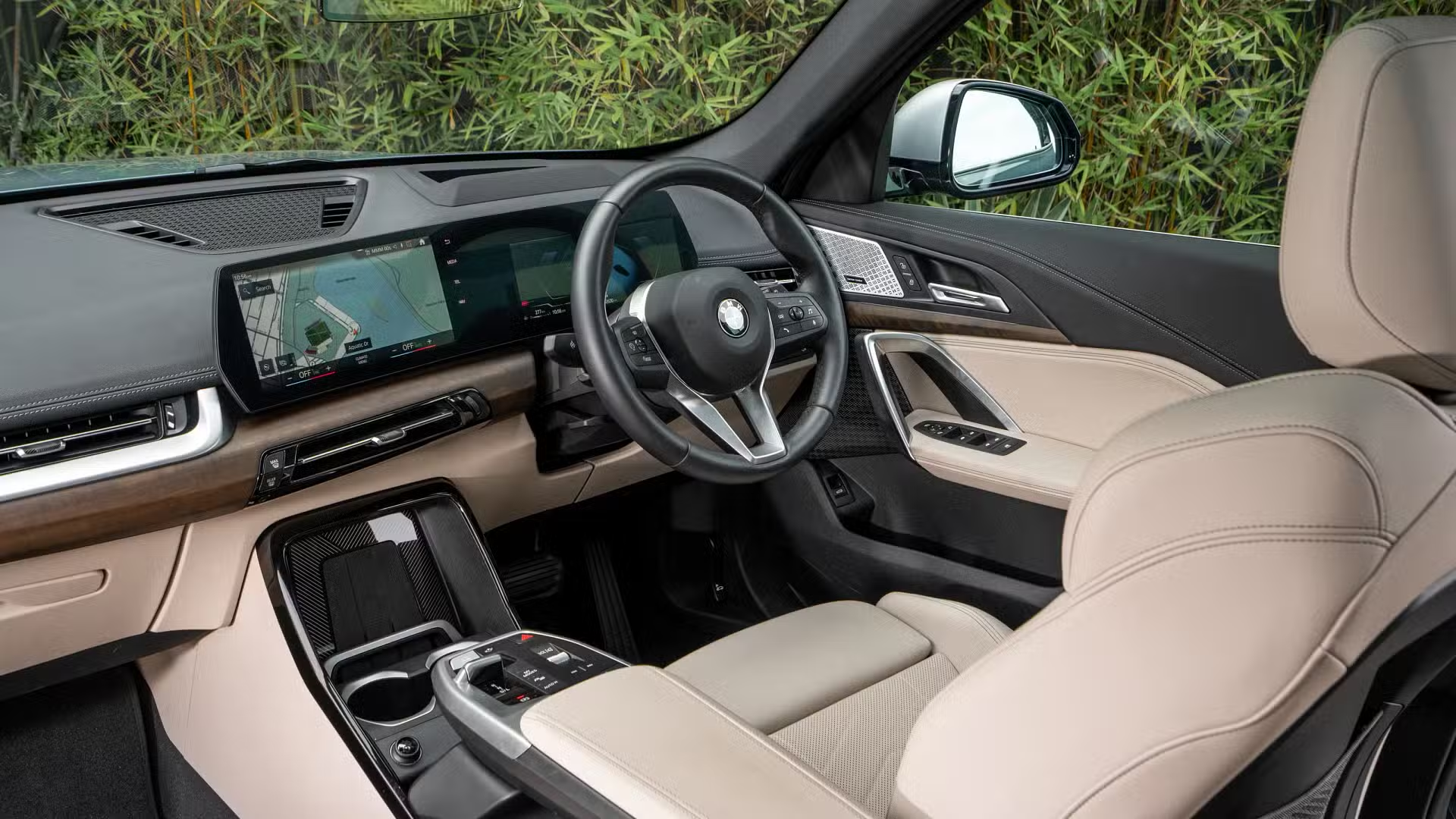BMW once made an attempt to introduce heated seats as a paid add-on, an issue that has shot a lot of controversy on BMW owing to reasons that a driver may regard heated seats as an undeserved extra. This prospect of spending 18 dollars per month on car seat warming was not pleasing to the customers, and none of that is wrong. Following an overwhelmingly negative reception and the lack of user uptake, BMW has officially killed its heated seats subscription service, a lesson worth learning in what customers are willing to put up with operating with digital car ownership.
This is based on an interview conducted with BMW board member Pieter Nota at the IAA mobility conference in Munich, where he articulated the logic and knowledge that the automaker had when making the move and acknowledged that this had not struck a chord with users. Nota said, we believed that we were going to give additional attention to the customer. The user acceptance is, however, not that high. And that being said, the story of the heated seat subscription was over, at least temporarily.
Then why would BMW actually think of charging for something that the car already offered built-in? What does it portend for the future of car features gated with pay plates? So, what is the BMW heated seats subscription controversy, the backlash, and the wider implication of the story to car buyers, and what can be learned here?
What Was the BMW Heated Seats Subscription?
BMW’s heated seats subscription was part of its larger push toward software-based vehicle upgrades. The idea was simple but frustrating: instead of paying once for heated seats at the time of purchase, drivers could unlock the feature later through a monthly, yearly, or one-time fee—even though the hardware was already installed in the vehicle.
BMW began rolling out this feature in various countries through its ConnectedDrive Store, offering flexible pricing plans:
| Subscription Type | Price (Approx.) | Notes |
| Monthly Subscription | $18/month | For drivers wanting a short-term option |
| Yearly Subscription | $180/year | Discounted compared to monthly rate |
| 3-Year Subscription | $300/3 years | Mid-term access |
| “Unlimited” Purchase | $415 one-time | Permanent access to the feature |
The subscription never launched in the United States, but was offered in countries like the UK, Germany, South Korea, New Zealand, and South Africa. It included not just heated seats, but in some cases, heated steering wheels as well.
Why Did BMW Introduce This in the First Place?
BMW and other carmakers are attempting to discover different means of making revenue using programs. The fact that most of the modern cars are software-controlled and are also internet-enabled means that the companies can now remotely lock/unlock functions using over-the-air (OTA) software updates.
This model enables the automakers to:
- Streamline the process of production by maintaining uniformity in hardware of all models of cars
- Provide upgrades in the future, once they have been bought
- There will be recurring revenues rather than one-off profits
- Test the idea of flexibility by allowing users an option on how to pay as they go
BMW thought that it would appear as a bonus, allowing the customers to turn functions on at a later time. Yet, they did not factor in the perception of the customer on the value of the item, and the response was deafening.
The Customer Backlash: Why It Failed
Since the news hit the press, the heated seats subscription has received intensive criticism all over social media, news resources, and even among the loyal BMW customers. It was more about equity and possession than price.
The reason customers were at loggerheads:
- Double Charging: Consumers had the feeling that they were being asked to purchase the car and at the same time make an additional payment on features that already come out of the box.
- Nontransparency: Most Buyers did not know that their vehicles possessed locked features.
- Destroying the Confidence: This was viewed as a greedy move that destroyed the trust between a brand and a buyer.
- Bad Precedent: By putting heated seats behind a paywall, where doesn’t it end? Power windows? Headlights?
Not only is this not the reality, the reality is perception, as Pieter Nota himself said: He might as well have said: it is not true, but perception is reality. And that was a PR nightmare for BMW.
Heated Seats Are Out, But Subscriptions Are Here to Stay
They have not abandoned the idea of subscriptions entirely, though BMW abandoned the idea of heated seats. The company is yet to have explored pay-per-use features of:
- Intelligent driving aids
- Adaptive suspension
- Remote start
- New and improved navigation and parking systems
BMW is not the only company doing this experiment. Other auto producers such as Mercedes-Benz, Tesla, Ford, as well as Toyota are currently passing the subscription model on other in-car services. But the majority are going with the software-only services or upgrades, never the hardware, which is owned by the customer.
A History of Subscription Missteps
The heated seats were not the first subscription mistake that BMW made. These are two previous instances that have not worked out:
1. Apple CarPlay Subscription
BMW initially made Apple CarPlay a one-time upgrade that cost customers 300 dollars; they changed it to an 80 dollars program per year. The concept was not quite right in the sense that the majority of the competitors were providing CarPlay at no cost. BMW finally abolished the fee.
2. The BMW access
BMW even tried the idea of car sharing by subscription. The so-called right to drive on the Access by BMW program costs approximately 2,000 dollars per month to use various BMW cars as a member of the club. The service was finally closed down due to lack of demand and because it cost very much.
Lessons Learned—What BMW’s Failure Teaches the Industry
The biggest takeaway from BMW’s heated seat subscription experiment is simple: don’t charge people to use what they already own.
While customers might be open to paying for software updates or new features that improve their driving experience, locking basic, expected functions behind a paywall feels dishonest and greedy. Customers expect comfort features like heated seats to be included in the purchase price—especially in a luxury vehicle.
BMW learned this the hard way, and other automakers would do well to pay attention. The success of subscription models in cars depends on:
- Adding real value, not removing it
- Transparency about what’s included
- Making subscriptions optional, not required for essential features
What’s Next for Car Subscriptions?
As vehicles continue to become more connected and reliant on software, subscriptions aren’t going away—but automakers need to be smarter about how they use them. People are more likely to accept subscriptions for:
- Real-time traffic services
- Premium audio or entertainment features
- Advanced safety and driver-assist packages
- Performance boosts (e.g., Tesla acceleration upgrades)
But trying to monetize basic functions like seat heating, window controls, or radio tuning is likely to backfire.
Conclusion – A Win for Drivers, a Wake-Up Call for Automakers
BMW’s decision to drop its heated seats subscription is a win for consumers and a sign that car owners still value ownership over rental-style access. While digital upgrades and over-the-air features are the future of driving, they must be implemented with care, fairness, and transparency.
The message is clear: if you’re going to offer subscriptions, make them worth it. Don’t charge people for something that’s already in the car. And certainly don’t try to sell the idea that heated seats are a “luxury add-on” when they’ve been standard features in economy cars for years.
For now, BMW owners can rest easy—your warm seat is yours to keep, no subscription needed.
You Might Also Like :- Fun Crafts Thunderonthegulf



